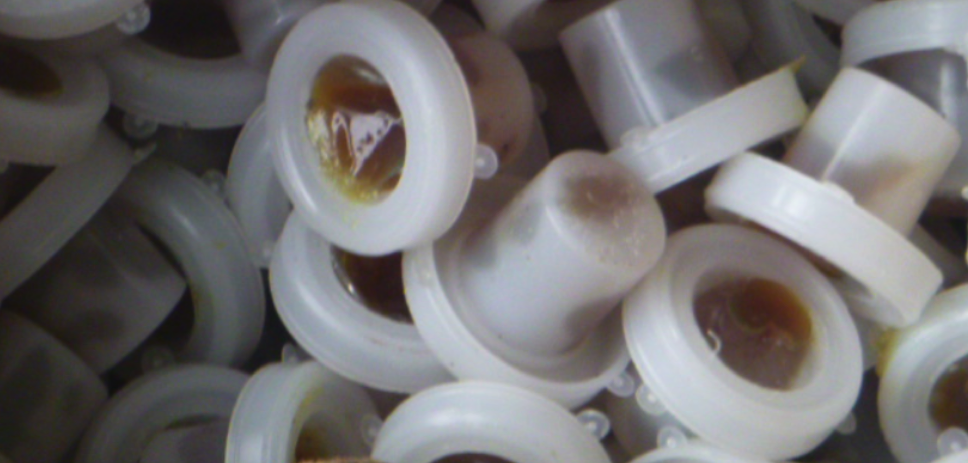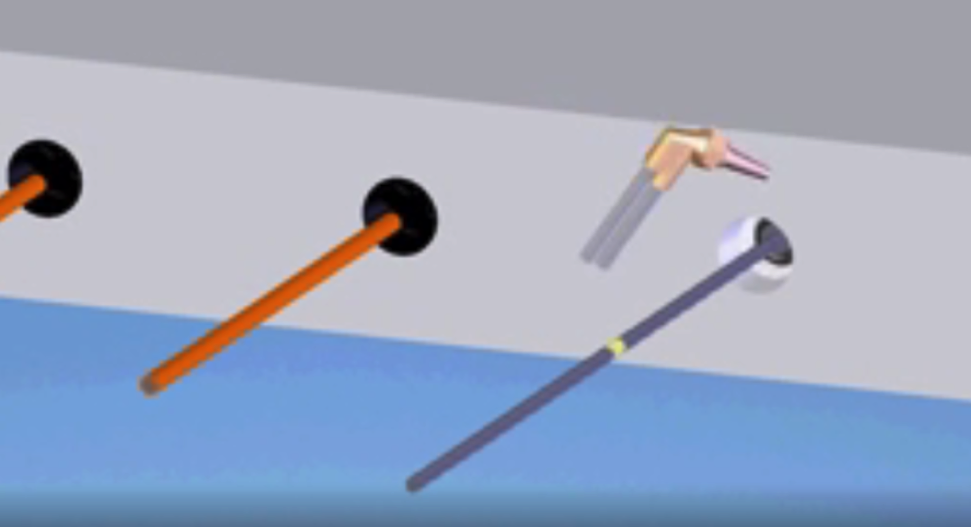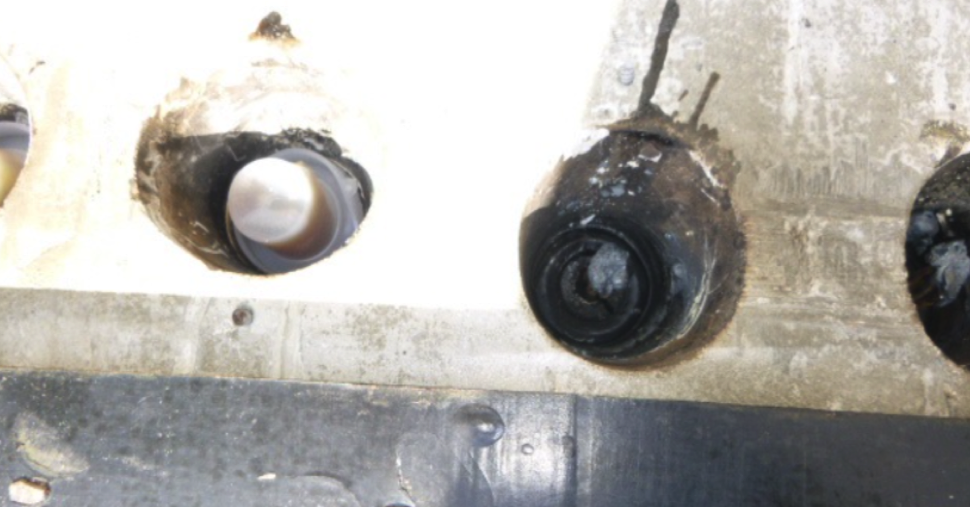Quality Built® Tech Alert
July 2015
Volume 2, Issue 9
Fully Encapsulated Post
Tension Systems
The saying goes that a chain is only as strong as its weakest link. This is particularly true for post tension cable systems. The use of post tension cable systems has become increasingly popular for meeting many design needs; creating solid, stable concrete structures that exceed the capabilities of conventionally reinforced concrete. Other advantages and benefits that a post tensioned concrete frame provide are: a faster construction cycle, minimized initial and life-cycle costs and it’s favorable sustainability ratings. However, Post tension cable systems are more susceptible to failures if any components of the system are not installed properly.
Post tension cable systems are made of 5 main components:
1. A braided tendon that is usually 7 wires wound together to make a single cable.
2. A grease-filled plastic sheathing that protects the tendon from corrosion or damage.
3. Chairs that support the tendon and ensure they have the appropriate profile.
4. Dead-end anchors, which anchor the end of a tendon that is fixed.
5. Live-end (AKA Stressing End) anchors, which anchor the end of a tendon where the stressing machine attaches. Fully encapsulated systems are intended to prevent the metal components from corroding over time; corrosion could lead to failure. The cable ends and anchors are considered the most difficult part to correctly install and fully encapsulate. In order to fully encapsulate a tendon the cable end must be cut precisely so that a grease filled cap can securely fit over the trimmed cable and attach to the anchor body.
When installed correctly this anchor is considered fully encapsulated, water tight and secure.

Depending on the installation environment, and especially for elevated structures, the proper installation of live-end anchors can be difficult, which has proven to be the leading source of problems in these systems. Once stressed these systems are placed under a lot of force and can be dangerous if a failure occurs. If an anchor fails due to corrosion or improper installation, the result can be that the structure no longer has the strength as designed, and in some occurrences cables have been known to shoot out the side of a structure like a rubber band that was suddenly released. Other indications of potential failure can also be observed from corrosion staining that is showing through the cladding of a building from an anchor end, or grout pockets that are telegraphing through the cladding system.
Once a concrete slab has been poured and properly cured the post tension cables must be stressed in order to give the structure its designed strength. The tension in the cable places portions of the structure in compression and adds tensile strength to the concrete which is favorable for creating strength. The stressing of a cable is typically done with a hand-held hydraulic stressing machine that fits over the cable end and sits in the pocket created by the live-end anchor. The cable is stressed to the specified tension, which leaves an excess length of cable sticking out the side of the structure, which will have to be cut. In order for a fully encapsulated system to work correctly the cable end must be precisely cut. In accordance with the Post-Tensioning Institute (PTI) Standards the cable end must be cut so there is between 1/2 inch and 3/4 inch in length for the grease cap to fit properly and maintain the minimum allowable tail length.

This is accomplished one of several ways. The cable end can be cut using an acetylene torch, a plasma cutter, a grinder, a saw or can be cut using mechanical shears. The torch has been the tool of choice for cutting cables historically, because of its low cost and ease of use. Unfortunately the torch is also the least accurate tool making it difficult to cut with the necessary precision. Mechanical shears are a nice option because when used properly they consistently produce the same length of the tail. This is preferable to make sure you get a good grease cap installation each time. These devices are oftentimes bulky and heavier than alternatives, require regular maintenance and require a significant initial investment, but are a good option for many projects. Depending on the size of the structure, cutting cables may be done thousands of times, so it must be done quickly and efficiently. In a slab-on-grade scenario, it is easier to physically maneuver and trim the cable ends, whereas on elevated decks there are more safety measures that must be considered when working on the end of a slab. Either way, the challenge is the same, the cable end must be trimmed perfectly.

Once trimmed the grease cap must be fitted and secured. If the grease cap is not properly seated there is a good chance the system will not be fully encapsulated, so it is critical to verify that each cap is attached properly. Finally once the grease cap is installed the anchor pocket must be fully grouted to pack the hole, protect the cable end, and provide a smooth surface for the cladding. Grouting is done by hand with a non-shrink grout that can be packed into the pocket and cured in place. It is critical that the pocket be properly cleaned of any debris or residue so that the grout can properly bond to the surrounding surface. Similar to the cable cutting process, this can be particularly challenging on elevated decks since there are additional safety considerations.

Many projects use the Hayes Industries Posi-Lock® Plus anchor system, which is a fully encapsulated post tension anchor. This is a very widely used system, which provides good corrosion resistance when properly installed and fully encapsulated.
Ultimately the precision and accuracy of trimming the cable, placing the grease cap and packing the grout on each and every cable anchor will determine if you have a weak link in your post tension cable system. If care is taken and the installation is done properly and documented, the chances of problems in the future are significantly reduced. We recommend that QA inspections occur on a statistical sampling of all post tension cables at times when the cuts can be observed as well as once the grease caps have been installed.
About the Author
Michael Buttress
Vice President of Operations
 Michael Buttress, has been with Quality Built since its reorganization in 2010. In addition to managing operations, Michael has also managed all Mass Inspection Programs at Quality Built.
Michael Buttress, has been with Quality Built since its reorganization in 2010. In addition to managing operations, Michael has also managed all Mass Inspection Programs at Quality Built.
Michael's construction management background with both large scale commercial projects as well as residential projects gives him a unique perspective on the inspection business. Michael is a graduate of the University of Florida and holds a degree in Building Construction.
You can reach Michael at: [email protected]